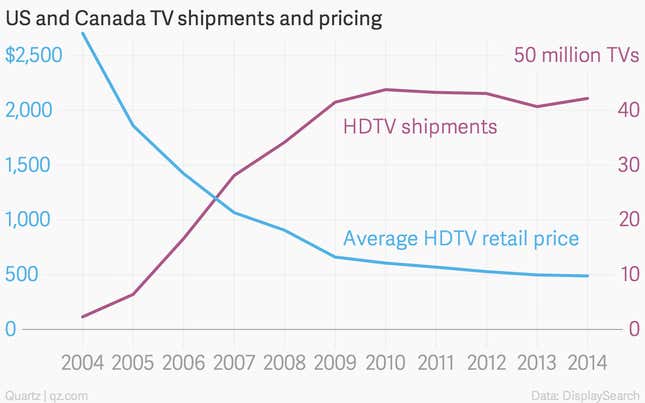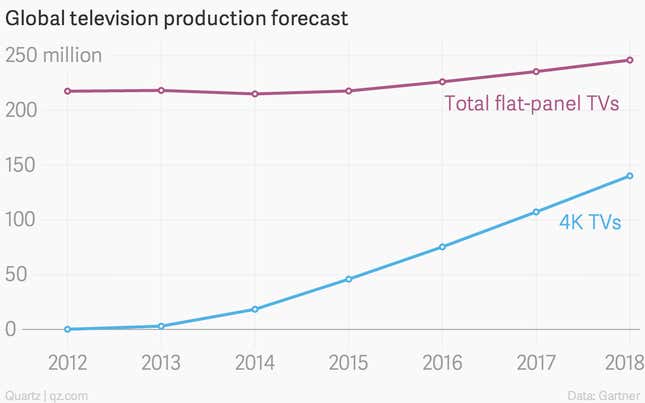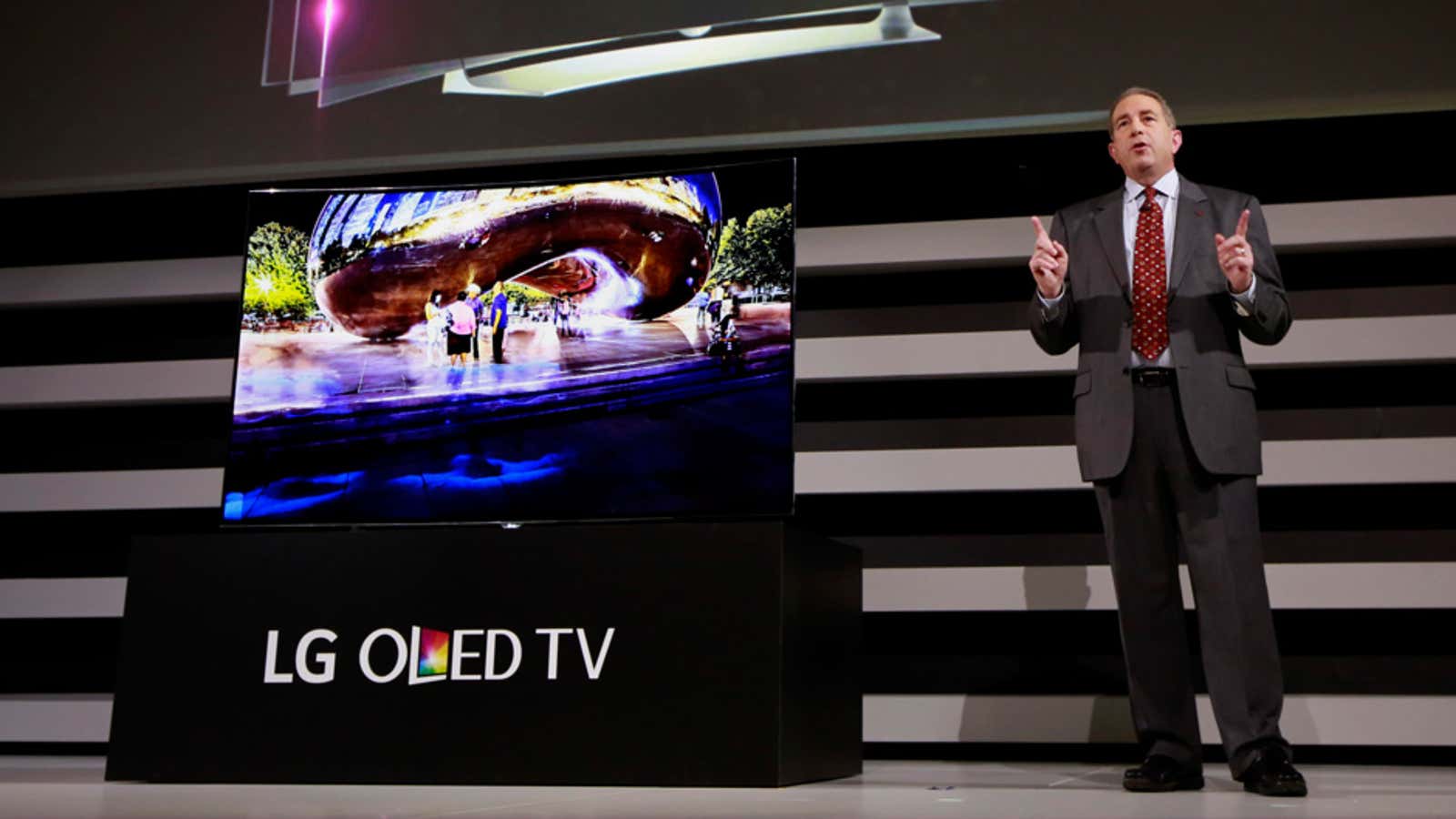Flat-screen TV sales soared over the past decade as prices decreased from thousands of dollars per set to hundreds. Now, the next wave of flat-panel televisions—even-higher-definition, beautiful “4K” sets—could finally be set to take off.
At the International Consumer Electronics Show in Las Vegas earlier this month, several manufacturers introduced new 4K TVs, including a line from Sharp that will start at under $750. More generally, 4K TVs in the US and Canada cost an average of $2,019 last year—down more than 50% from 2013—according to DisplaySearch, which tracks the industry.
If the HDTV era is any indication, dropping below that $2,000 barrier makes a big difference. When the average retail price of HDTVs fell to $1,423 in 2006, from $1,861 in 2005, annual sales increased by 10 million, according to DisplaySearch.

Meanwhile, 4K TV shipments are still modest—about 1.1 million in the US and Canada last year, according to DisplaySearch. But as prices continue to fall, expect 4K sets to make up a greater percentage of TV sales. The research firm Gartner, for instance, expects 4K TVs to represent 57% of total global TV production in 2018, up from about 9% last year.

One important issue this time: While HD television content was a huge upgrade over previous, low-definition content—especially noticeable in sports, films, and videogames—there hasn’t yet been a similar must-have case for 4K, and there isn’t much 4K content available yet.
But there were positive developments here, too, at CES in Las Vegas. A new “Ultra HD Alliance” between TV makers including Samsung, Sony, and Panasonic and content giants such as Disney, Fox, and Netflix, could help solve the what-to-watch problem.
